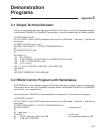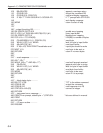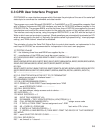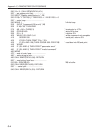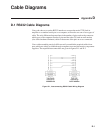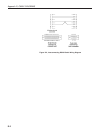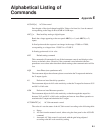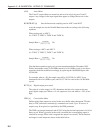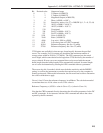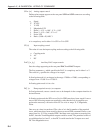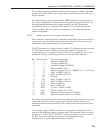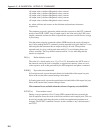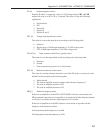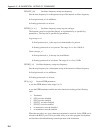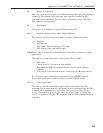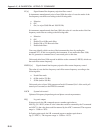
E-3
Appendix E, ALPHABETICAL LISTING OF COMMANDS
Bit Decimal value Output and range
0 1 X Output (±10000 FS)
1 2 Y Output (±10000 FS)
2 4 Magnitude Output (±10000 FS)
3 8 Phase (±18000 = ±180°)
4 16 Sensitivity setting (4 to 27) + IMODE (0, 1, 2 = 0, 32, 64)
5 32 ADC1 (±10000 = ±10.0 V)
6 64 ADC2 (±10000 = 10.0 V)
7 128 Unassigned
8 256 DAC1 (±10000 = 10.0 V)
9 512 DAC2 (±10000 = 10.0 V)
10 1024 Noise (±10000 FS)
11 2048 Ratio (±10000 FS)
12 4096 Log ratio (-3000 to +2000)
13 8192 Last value given to EVENT command
14 16384 Reference frequency bits 0 to 15 (mHz)
15 32768 Reference frequency bits 16 to 32 (mHz)
32768 points are available for data storage, shared equally between the specified
curves. For example, if all 16 outputs are stored then the maximum number of
storage points would be 2048 (i.e. 32768/16). The LEN command sets the actual
curve length, which cannot therefore be longer than 32768 divided by the number of
curves selected. If more curves are requested than can be stored with the current
buffer length, then the buffer length will be automatically reduced. Its actual length
can of course be determined by sending the LEN command without a parameter.
The reason why bit 4 is needed, which stores both the sensitivity and the IMODE
setting, is to allow the instrument to transfer the acquired curves to the computer in
floating point mode. Without this information, the unit would not be able to determine
the correct calibration to apply.
Curves 14 and 15 store the reference frequency in millihertz. The calculation needed
to translate these two 16-bit values to one 32-bit value is:
Reference Frequency = (65536 × value in Curve 15) + (value in Curve 14)
Note that the CBD command directly determines the allowable parameters for the DC
and HC commands. It also interacts with the LEN command and affects the values
reported by the M command.



